Food Labels-Next Generation In Nutritional Data
![]()
FOOD LABELS, THE NEXT GENERATION IN NUTRITIONAL DATA (ISSUE 119)
By Diane Gold
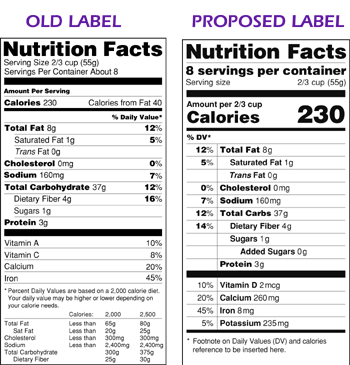 Food labels, the next generation in nutritional data, is being proposed by the Food And Drug Administration. The changes to the nutritional label would help consumers identify food facts more easily, get a more realistic and up-to-date version of what a portion of food in the present day represents and know what sugars in a product are added and not part of the inherent make-up of the food.
Food labels, the next generation in nutritional data, is being proposed by the Food And Drug Administration. The changes to the nutritional label would help consumers identify food facts more easily, get a more realistic and up-to-date version of what a portion of food in the present day represents and know what sugars in a product are added and not part of the inherent make-up of the food.
1970s TO CURRENT FOOD REGULATIONS
I have been researching ingredients and labels since 1971 when I started querying manufacturers about from what source enzymes, lecithin, mono- and di- glycerides, and the myriad of hard-to-pronounce substances. I wanted to know whether they came from an animal, vegetable, mineral, synthetic process. Back in those days, similar to now, many manufacturers did not know that information because they used whatever their suppliers supplied them based upon what was cheapest on the day of purchase.
1970s. The first labels came in the early 1970s when some companies began putting food information on the packaging.
1990. In 1990 came the Nutrition Labeling And Education Act, which required macronutrients on the label: protein, carbohydrates, fats and other data.
1996. The Food Quality Protection Act came in 1996 which regulated some of the pesticides in our food.
2011. The Federal Food, Drug And Cosmetic Act came with more regulation on pesticides, which came from updated reports of the harmful effects these pesticides had on humans and animals through the food they ate.
2014. The Food And Drug Administration has a proposal to upgrade food labels once again. After reading about the changes,
ACTION STEP
Go here to comment, agree, add, disagree:
http://www.regulations.gov/#!docketDetail;D=FDA-2012-N-1210
and leave a comment. When we take action, change happens.
THE PROPOSED CHANGES
1) SERVING SIZE
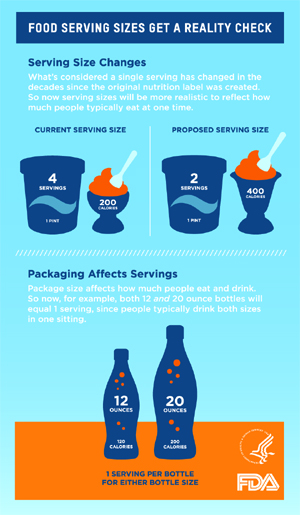 What we used to eat 20 years ago that was listed by FDA as one serving is being recognized as obsolete and totally inaccurate. Due to our larger servings or mislabeling originally, the portion size on the label is being increased. So, if we ate ice cream before the label changes, 1 serving would be 200 calories, half a cup, with 4 servings in the pint.
What we used to eat 20 years ago that was listed by FDA as one serving is being recognized as obsolete and totally inaccurate. Due to our larger servings or mislabeling originally, the portion size on the label is being increased. So, if we ate ice cream before the label changes, 1 serving would be 200 calories, half a cup, with 4 servings in the pint.
The proposed change would list 1 serving as 400 calories, 1 cup, with 2 servings per pint. If I were eating ice cream, which I do infrequently to curb the repercussions from this occurrence, my single serving could be 2 cups, 800 calories, 1 pint. And that’s not including any additional nuts, syrupy fruit, caramel or fresh, ice cream store ice cream.
With the proposed changed, the well-known brand of store-bought designer ice cream I just checked would go from serving size 1/2 cup to 1 cup, since most people don’t eat 1/2 cup.
It’s also possible the FDA will include a dual column label which would allot for accuracy of 2 different sized portions, like 1 cup serving or 2 cups (whole container for a pint) or, with soda, 12 oz. or 24 oz.
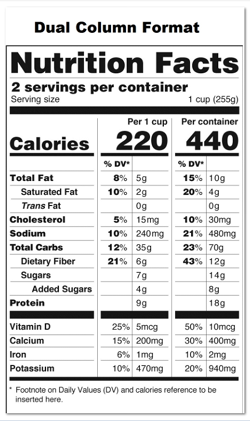 The term cup is helpful because it’s something we can measure. The term container keeps is nebulous since containers range in sizes.
The term cup is helpful because it’s something we can measure. The term container keeps is nebulous since containers range in sizes.
2) ADDED SUGARS
Food labels have a column for sugars. What they don’t say is from where that sugar is derived. They don’t say whether it is from the natural orange in the ingredients or from some additional sugar, added during manufacturing. The FDA proposal asks for a sub-heading called Added Sugars. I believe it will be a percentage so that we will be left to figure out which are natural ingredients and which are added. This would mean we have to be aware that agave, agave nectar, barley malt syrup, beet sugar, brown rice syrup, brown sugar, cane or cane juice crystals, cane sugar, coconut sugar, coconut palm sugar, corn sweetener, corn syrup, corn syrup solids, dehydrated cane juice, dextrin, dextrose, evaporated cane juice, fructose, fruit juice concentrate, glucose, high-fructose corn syrup, honey, invert sugar, lactose, maltodextrin, malt syrup, maltose, maple syrup, molasses, palm sugar, raw sugar, rice syrup, saccharose syrup, sorghum syrup, stevia, sucrose, syrup, treacle, turbinado sugar, xylose are added sugars and sorbitol and maltitol are sugar alcohols.
Why do we care about added sugars?
The American Journal of Clinical Nutrition, 78 (suppl) 827s, 2003 said,
” … excess energy intake from added sugars can potentially lead to nutrient shortcomings, due to displacement of more nutrient-dense foods/beverages, and to weight.”
To clarify nutrient density, here’s Clemson University, South Carolina, Cooperative Extension Service’s definition,
“Foods that supply generous amounts of one or more nutrients compared to the number of calories they supply are called nutrient dense.”
So, if we’re gorging down sweetened soda, we are not ingesting glorious veggie juice, hydrating water or other healthy food that is not reaching us because we are full from nutritionless soda.
It’s important to be aware of ingredients that are sugar. If a product has more than one of these, the split in “actual sugar,” that is, a substance that turns carbs into glucose, gets lower on the label of ingredients since the highest percentage ingredients go first.
3) NUTRIENT REQUIREMENTS
Calcium, Iron stay. Potassium, Vitamin D are added. Vitamins A and C will no longer required.
4) UPDATED DAILY VALUES
The amounts of nutrients needed per day will be updated to match the current scientific information we have.
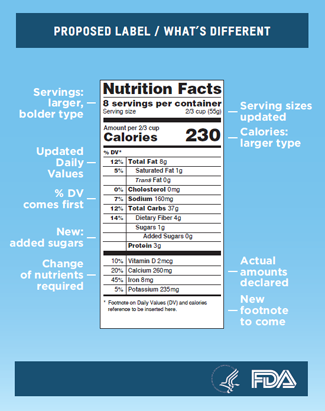
5) DESIGN
The daily values will be on the left side, more visible to the eye, and the serving size and calories will be bigger and bolder so that we become more aware of what our serving size actually is.
Personally, I would like to see every package show the total calories per package, like 1217 calories for a bag of 8 oz. fried, unsalted potato chips, so that when I buy them and eat them in one sitting, I am completely aware of the 79 grams of fat (25g of which is saturated) I consume. Calories are great since they give energy to the body; it’s where they come from that matters. And this one bag exceeds the amount of fat and saturated fat recommended for 1 person in 1 entire day.
ADDICTION ALERT
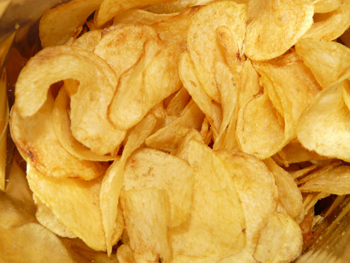 Eating an entire bag of chips, on my part, is possible. It’s similar to my addictive ways with any substance. If I indulge in it once, I will want to indulge again the next day and will have to put forth a concerted effort to replace the potato chip buying behavior with another for, at least, a month, until, if I am lucky, the urge will go dormant again. When I do it, I usually buy baked (reducing the fat grams to 24 greasy grams), since fried will make me feel sick and the craving for grease will require more will power to replace.
Eating an entire bag of chips, on my part, is possible. It’s similar to my addictive ways with any substance. If I indulge in it once, I will want to indulge again the next day and will have to put forth a concerted effort to replace the potato chip buying behavior with another for, at least, a month, until, if I am lucky, the urge will go dormant again. When I do it, I usually buy baked (reducing the fat grams to 24 greasy grams), since fried will make me feel sick and the craving for grease will require more will power to replace.
IMPORTANT CHANGES I WOULD LIKE TO ADD
What are not included in the proposed changes are the following:
1) PROHIBITING NON-SCIENTIFIC VERBIAGE LIKE “NATURAL” AND “FRESH,” words that are meaningless and mislead the uneducated consumer to think these foods are better or organic. We depend upon it to regulate food and drugs, and, thus, should require scientifically founded language only with asterisk to the report on which it is based so that our health knowledge is never based on which company has the best marketing.
2) REQUIRING HARVESTED AND MANUFACTURING DATE AND STATEMENT THAT SAYS SAFE IF USED BY, including the report on which this “use by” info is based. Currently, we have no way to know whether produce is left in a refrigerator for a year or not. With manufacturing, each decides on the length of time after completion date that is safe for a consumer. Therefore, we have no way to know on what data each farmer or manufacturer uses. We have a right to know and for it all to be consistently monitored.
3) LISTING INGREDIENT SOURCES USED IN MANUFACTURING, gathering, packaging process and whether they are animal, plant, part-animal or -plant or synthetic, including defined guidelines for the words animal, vegetable, part and synthetic.
Take isinglass or other animal derivative finings in beer or wine which clears out cloudiness from yeast. There are also glycerol monostearate used for foam on the beer and honey or lactose for flavor. Since these additives exist, every manufacturer should be required to define whether or not its product contains any of these or other ingredients.
4) LISTING THE SOURCE, for ingredients that typically have multiple sources. An example of this would be lecithin, without the word animal, soy or plant-based next to it. When the labels says lecithin, we are guessing at its source. Another very common ingredient is mono-glycerides or mono-and di-glycerides, as they are commonly used together. These emulsifiers can come from animal, plant or synthesized process. If a product lists animal mono-glycerides, there would be no question as to its source, and people could make informed decisions without calling the manufacturer. As it is now, manufacturers only list the details of ingredients to avoid law suits from allergic reactions or if their profits come from a particular religious group that requires it. I would change the regulation to require producer disclosure on all packaging.
5) DISCLOSURE OF WAX AND POLISH, such as waxes on produce or polishing on vitamins tablets. Each manufacturer or produce finisher (the company that sprays wax on fruit before it goes to market) should be required to list the source of the ingredients that are used. Of course, this means that manufacturers would have to keep an up-to-date database of the sources of the ingredients from their suppliers.
Many people are not aware that apples, avocados, peppers are waxed. The wax may be plant-based, bee-based, petroleum-based or synthetic. We deserve to go to the store or market and get our food without having to call the food’s producer before eating it. The food industry is concerned with safety, as it should be. It would do well also to care about informing us of what we consume because we trust them.
CONCLUSION
We depend upon food labels all the time. Their accuracy is crucial for our education and that of children. Eating nutritionally is the one action that can maximize our health, more than any other act. The FDA has the ability to educate us with the nutritional data they approve on packages.
ACTION STEP
It’s great that there is an update coming on food labels. Let’s make some comments at:
http://www.regulations.gov/#!docketDetail;D=FDA-2012-N-1210
to be personally involved, to make a difference and to speak out for what we believe.
There is a finite window for these comments before the proposal goes for a vote. So, let’s make them count toward the next generation of food labels.
____
If you wish to share your story, please hit reply in your email program to be contacted.
![]()
FEEDBACK
We value your feedback very much. Please leave a comment below.
Please LIKE us on the website and at WarriorsOfWeight on Facebook. Thanks.
![]()
![]()
DIANE GOLD, AUTHOR
Diane Gold, Founder of Warriors of Weight, Turning Habits Into Health, is a mentor in tai chi, kung fu and meditation, a music, fitness and stress expert, dedicated mom, studying plant-based nutrition and habit change.
She has been working with food manufacturers for 40 years, inquiring about information not shown on food labels. She says,
“I believe it is the food industry’s job to educate us: not at the expense of profit but, also, not at the expense of foregoing the latest science. The food labeling system should provide for more frequent label updates as the science comes in.
“The manufacturer and the farmer are our teachers in nutritional data. Let us use them wisely in this educational regard.
![]()

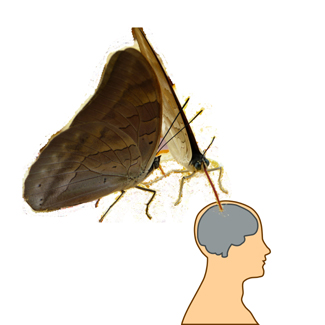
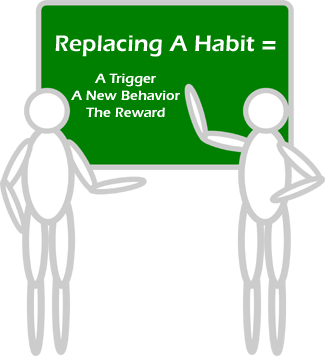 So, here’s this task we have for ourselves. We have a habit, and we want to replace it.
So, here’s this task we have for ourselves. We have a habit, and we want to replace it.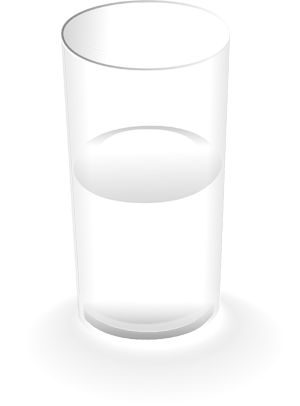 Consider the glass’ being half empty or half full concept. When the glass is full, we think of richness. The empty term, in Western terms, can speak to barrenness, although, in the Eastern way, emptiness is the way to abundance.
Consider the glass’ being half empty or half full concept. When the glass is full, we think of richness. The empty term, in Western terms, can speak to barrenness, although, in the Eastern way, emptiness is the way to abundance. Be careful of the feeling of boredom. It can act as a built-in excuse for doing a certain behavior that is not good for us. We might think that if we had excitement rather than stagnation in our lives, we would not act out the behavior we wanted to change. We might even create the boredom to delude ourselves.
Be careful of the feeling of boredom. It can act as a built-in excuse for doing a certain behavior that is not good for us. We might think that if we had excitement rather than stagnation in our lives, we would not act out the behavior we wanted to change. We might even create the boredom to delude ourselves.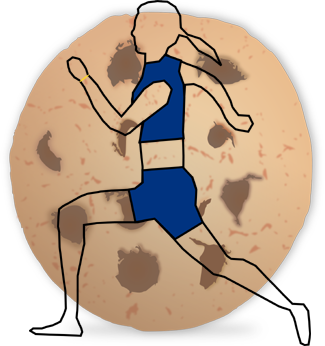 Let’s say we always get the urge to eat dessert. We can change our reaction to this trigger by planning another behavior in its stead, such as going jogging as soon as that urge is felt. This will begin the process of replacement. Repeating this behavior will turn it into a habit. By behaving consistently by jogging and not dessert eating, we will have replaced our old with the new behavior. Although this certainly is quitting acting out the old behavior from the sheer repetition of the act; it’s easier to accomplish by using the concept of “replace.”
Let’s say we always get the urge to eat dessert. We can change our reaction to this trigger by planning another behavior in its stead, such as going jogging as soon as that urge is felt. This will begin the process of replacement. Repeating this behavior will turn it into a habit. By behaving consistently by jogging and not dessert eating, we will have replaced our old with the new behavior. Although this certainly is quitting acting out the old behavior from the sheer repetition of the act; it’s easier to accomplish by using the concept of “replace.”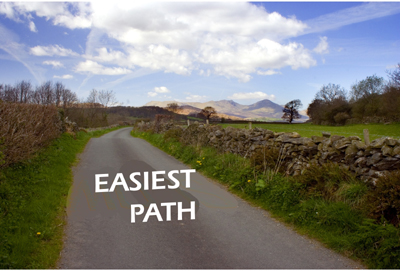 Of course, when we want to do something new in place of some old habit, we want to give ourselves the easiest path to follow. That path involves planning one simple action that will be repeated over and over again. It also requires saying “replace” instead of “quit.”
Of course, when we want to do something new in place of some old habit, we want to give ourselves the easiest path to follow. That path involves planning one simple action that will be repeated over and over again. It also requires saying “replace” instead of “quit.”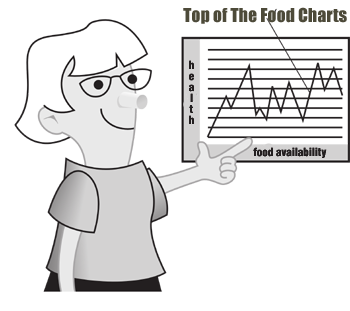 We would think that healthy eating in the United States is easy and that we are at the top of the charts when compared to other countries.
We would think that healthy eating in the United States is easy and that we are at the top of the charts when compared to other countries.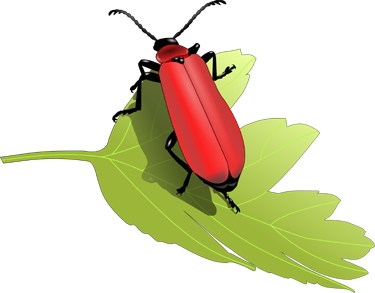 Farmers use some method of offsetting bugs and weeds on their crop. Many use toxic pesticides which change the basic structure of the fruit or vegetable being grown or add some new chemical structure to the plant by pesticide exposure. This makes the food less healthy.
Farmers use some method of offsetting bugs and weeds on their crop. Many use toxic pesticides which change the basic structure of the fruit or vegetable being grown or add some new chemical structure to the plant by pesticide exposure. This makes the food less healthy.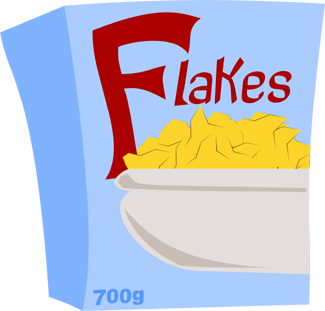 More packaged food than not is in our supermarkets. We use corn and soy, most of it genetically engineered (GE), and sugar, half of it GE, to create fast food with lovely colors. Instead of selling snacks that are fresh food, we buy boxes or bags with ingredients we can’t pronounce. Older generations did it, meaning our parents or grandparents; so why shouldn’t we?
More packaged food than not is in our supermarkets. We use corn and soy, most of it genetically engineered (GE), and sugar, half of it GE, to create fast food with lovely colors. Instead of selling snacks that are fresh food, we buy boxes or bags with ingredients we can’t pronounce. Older generations did it, meaning our parents or grandparents; so why shouldn’t we? We are pleasure seekers and taste mongers with our taste buds being bombarded with new combos of flavor. We will do anything for the next delight, whether it be food, body sensation, exercise, drink, color, gadget. What this means with food is that, even though we know that healthy food is crucial, we choose to eat highly fatty, salty, oily foods that taste unbelievably good. And we have developed the habit of eating portions that are much too large, just because we have developed the habit by being served too much in a restaurant or at home.
We are pleasure seekers and taste mongers with our taste buds being bombarded with new combos of flavor. We will do anything for the next delight, whether it be food, body sensation, exercise, drink, color, gadget. What this means with food is that, even though we know that healthy food is crucial, we choose to eat highly fatty, salty, oily foods that taste unbelievably good. And we have developed the habit of eating portions that are much too large, just because we have developed the habit by being served too much in a restaurant or at home.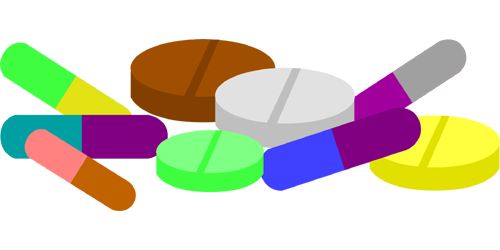 Antibiotics do not work against viruses. They also strip the body of the microbiomes needed on an hourly basis in the human digestive tract. A study at Washington University School of Medicine, St. Louis, Mo., published in Pediatrics in 2012, swabbed the nasal passages of young children with unexplained fever and, for control, children without fever. Those with fever had 5 X the viral load of those without. The study’s objective was to to determine whether a quick nasal swab could improve the mistaken prescribing of antibiotics for viral sickness, which always harms microbial balance. The jury is still out, in my opinion, for 2 reasons: the antibiotic industry is massively profitable and there are some very nasty bacteria that can kill the patient if antibiotics are not given in time.
Antibiotics do not work against viruses. They also strip the body of the microbiomes needed on an hourly basis in the human digestive tract. A study at Washington University School of Medicine, St. Louis, Mo., published in Pediatrics in 2012, swabbed the nasal passages of young children with unexplained fever and, for control, children without fever. Those with fever had 5 X the viral load of those without. The study’s objective was to to determine whether a quick nasal swab could improve the mistaken prescribing of antibiotics for viral sickness, which always harms microbial balance. The jury is still out, in my opinion, for 2 reasons: the antibiotic industry is massively profitable and there are some very nasty bacteria that can kill the patient if antibiotics are not given in time.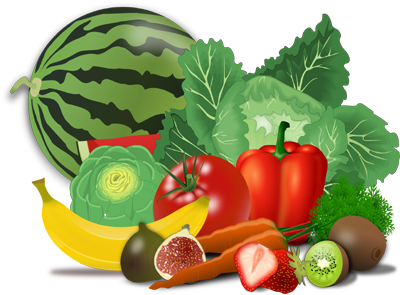 How long is the nutrition course in our schools? What? There isn’t one, or there was that one day when Chelsie’s mom, the chef, came in? We learn how to read, how to write, how to add and subtract numbers so that we can go to the bank and shop, but is there an ongoing course to teach us how to sustain our health through food or teach us what to buy based on budget?
How long is the nutrition course in our schools? What? There isn’t one, or there was that one day when Chelsie’s mom, the chef, came in? We learn how to read, how to write, how to add and subtract numbers so that we can go to the bank and shop, but is there an ongoing course to teach us how to sustain our health through food or teach us what to buy based on budget? 1)
1)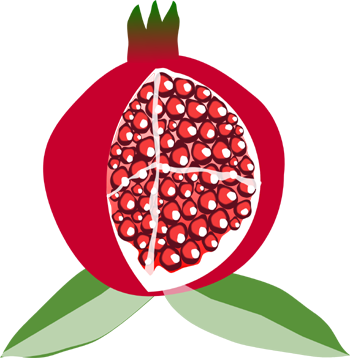
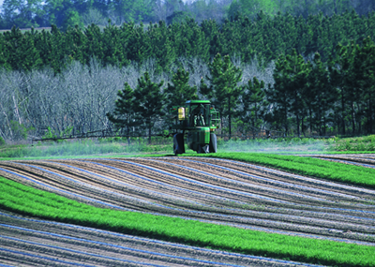 The Environmental Protection Agency (epa.gov) regulates pesticides, but the amounts it allows in our fruits and vegetables is not so easy for the lay person to evaluate. Partly because we don’t have the time to look up the more than 1055 approved pesticides in use in the US and partly because the EPA is not offering the easiest chart for consumers. Agricultural Pesticides
The Environmental Protection Agency (epa.gov) regulates pesticides, but the amounts it allows in our fruits and vegetables is not so easy for the lay person to evaluate. Partly because we don’t have the time to look up the more than 1055 approved pesticides in use in the US and partly because the EPA is not offering the easiest chart for consumers. Agricultural Pesticides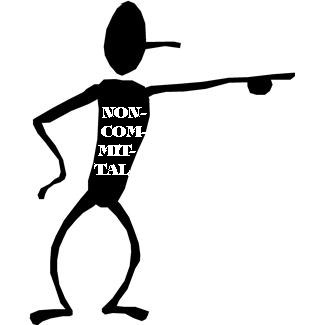
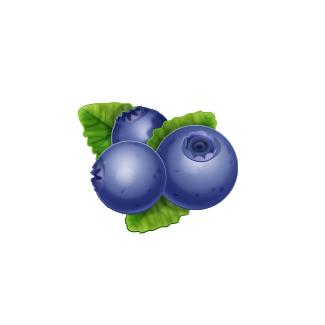 Whatsonmyfood.org gives us some excellent information about the presence of pesticides on foods. It takes its info from the US Department of Agriculture, Pesticide Data Program, currently using 2005 data. For example, it lists that blueberries have a particular percentage of all blueberries in the US, on average, have pesticides A, B, C, D, E, F, G, H, I, J, K, L, M, N, O, P, Q, R, S, T, U, V, W, X, Y, Z, AA, BB, CC, DD, EE, FF, GG, HH, II, JJ, KK, LL, MM, NN, OO, PP, QQ, RR, SS, TT, UU, VV, WW, XX and YY present. It would be great if we could easily find a table showing the EPA tolerances (amount of pesticides that are permitted to be present and still be safe for consumption) for each of those pesticides.
Whatsonmyfood.org gives us some excellent information about the presence of pesticides on foods. It takes its info from the US Department of Agriculture, Pesticide Data Program, currently using 2005 data. For example, it lists that blueberries have a particular percentage of all blueberries in the US, on average, have pesticides A, B, C, D, E, F, G, H, I, J, K, L, M, N, O, P, Q, R, S, T, U, V, W, X, Y, Z, AA, BB, CC, DD, EE, FF, GG, HH, II, JJ, KK, LL, MM, NN, OO, PP, QQ, RR, SS, TT, UU, VV, WW, XX and YY present. It would be great if we could easily find a table showing the EPA tolerances (amount of pesticides that are permitted to be present and still be safe for consumption) for each of those pesticides. The Environmental Working Group has created a consumer guides that lists which top fruits and veggies have the most and least pesticides so that we can choose how to spend our money and ingest fewer pesticides. This group is the environmental health and advocacy organization whose work resulted in the Food Quality Protection Act in 1996.
The Environmental Working Group has created a consumer guides that lists which top fruits and veggies have the most and least pesticides so that we can choose how to spend our money and ingest fewer pesticides. This group is the environmental health and advocacy organization whose work resulted in the Food Quality Protection Act in 1996.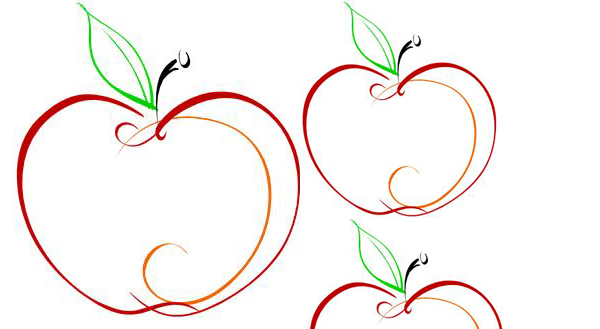 APPLES
APPLES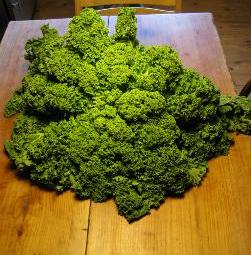


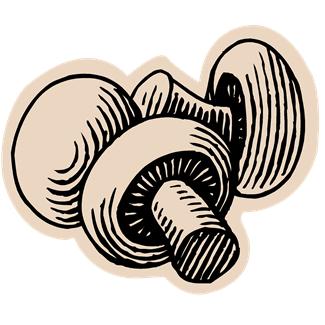
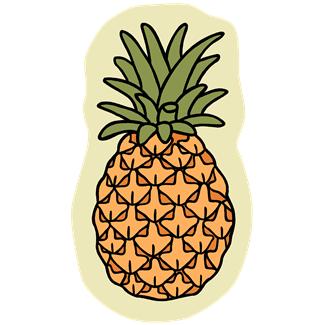
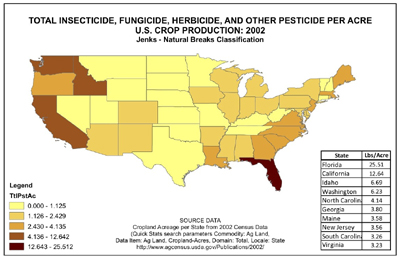 Pesticides are here, both on organic and conventional produce. Synthetic pesticides can burn the mouth, lungs, the respiratory system, cause nerve damage, cause skin to peel or change color, cause temporary blindness when exposure is high. Hopefully, we are never exposed to enough at once to cause anything like this. But it makes us think about how safe pesticides are in smaller quantities on our food.
Pesticides are here, both on organic and conventional produce. Synthetic pesticides can burn the mouth, lungs, the respiratory system, cause nerve damage, cause skin to peel or change color, cause temporary blindness when exposure is high. Hopefully, we are never exposed to enough at once to cause anything like this. But it makes us think about how safe pesticides are in smaller quantities on our food.
 Animal protein is known to clog arteries. Plant-based is not known to do this.
Animal protein is known to clog arteries. Plant-based is not known to do this. If people are healthier and use less medical services, less pharmaceuticals; they will reduce their own personal costs. They will also reduce the pharmaceutical and medical equipment manufacturing rate as well as the distribution and transportation costs which are 1.5 to 4.5% of their sale price, according to Transportation Journal, Jan., 2005.
If people are healthier and use less medical services, less pharmaceuticals; they will reduce their own personal costs. They will also reduce the pharmaceutical and medical equipment manufacturing rate as well as the distribution and transportation costs which are 1.5 to 4.5% of their sale price, according to Transportation Journal, Jan., 2005. If we could avoid running over a dog or cat in the road, would we do it? Of course, we would. In the same way, if we transitioned to a plant-based diet, we would be doing just that. We would automatically be eliminating the need for the animal industry to replace food we just ate. This means we would slow down the process of using animals for food, which, more times than we would like to think, abuses, terrorizes and mutilates animals. Although there are hard, honest workers in the animal food industry, if there are other choices, can we make them?
If we could avoid running over a dog or cat in the road, would we do it? Of course, we would. In the same way, if we transitioned to a plant-based diet, we would be doing just that. We would automatically be eliminating the need for the animal industry to replace food we just ate. This means we would slow down the process of using animals for food, which, more times than we would like to think, abuses, terrorizes and mutilates animals. Although there are hard, honest workers in the animal food industry, if there are other choices, can we make them?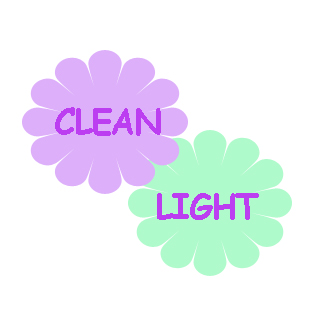 Another reason for considering a plant-based diet (or its direction) is personal to me. Therefore, please consider this in evaluating it.
Another reason for considering a plant-based diet (or its direction) is personal to me. Therefore, please consider this in evaluating it.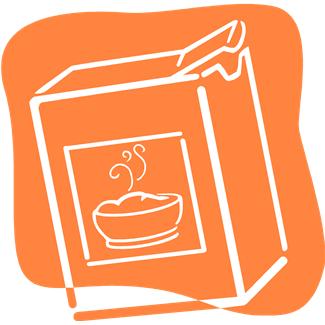 2)
2)
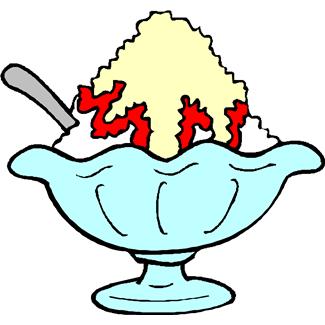 This makes complete sense from a visceral point of view. Let’s say we have not had cake, cookies, candy, ice cream for a while because we always eat too much or because we have heard sugar is bad. What happens when we have some?
This makes complete sense from a visceral point of view. Let’s say we have not had cake, cookies, candy, ice cream for a while because we always eat too much or because we have heard sugar is bad. What happens when we have some? According to some old US Department of Commerce sales reports, researched, converted to approximate consumption and infographed by Stephen Guyenet, an obesity researcher at University of Washington, B.S., biochemistry, PhD, neurophysiology, and Jeremy Landen, as of 2012, we consumed approximately 100 pounds of sugar per year. In 1822, we consumed 6.3 pounds per person per year. Another way of looking at it is that in 1822, we consumed the equivalent of a can of cola’s worth of sugar in five days. Now, we consume that number in seven hours. That’s 19 times an increase.
According to some old US Department of Commerce sales reports, researched, converted to approximate consumption and infographed by Stephen Guyenet, an obesity researcher at University of Washington, B.S., biochemistry, PhD, neurophysiology, and Jeremy Landen, as of 2012, we consumed approximately 100 pounds of sugar per year. In 1822, we consumed 6.3 pounds per person per year. Another way of looking at it is that in 1822, we consumed the equivalent of a can of cola’s worth of sugar in five days. Now, we consume that number in seven hours. That’s 19 times an increase.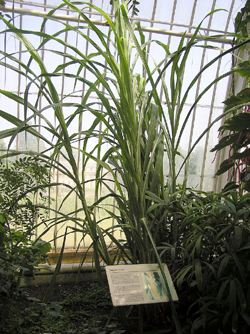 According to the FDA’s food labeling provisions, not all sugars are required to be listed. Currently, regulation 101.9(c)(6)ii requires that the sugars that must be counted within the labeling system are mono- and disaccharides. That means glucose, fructose, lactose, sucrose. All other sugars may be included voluntarily. That includes fiber and sugar alcohols such as sorbitol, xylitol, mannitol.
According to the FDA’s food labeling provisions, not all sugars are required to be listed. Currently, regulation 101.9(c)(6)ii requires that the sugars that must be counted within the labeling system are mono- and disaccharides. That means glucose, fructose, lactose, sucrose. All other sugars may be included voluntarily. That includes fiber and sugar alcohols such as sorbitol, xylitol, mannitol.
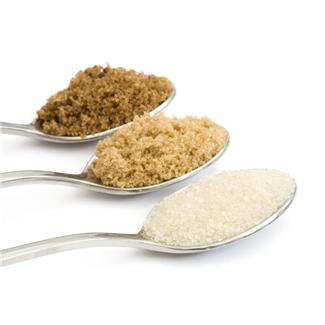 Regulation of sugar intake is good. Knowing what sugary substances we ingest is great. If we don’t stress our bodies by putting them through the sugar roller coaster, we are better off. If our bodies react poorly to high sugar intake, we can notice it. Is sugar bad for our health? It depends upon which kind of sugar, the condition of our health, how much and our lifestyle.
Regulation of sugar intake is good. Knowing what sugary substances we ingest is great. If we don’t stress our bodies by putting them through the sugar roller coaster, we are better off. If our bodies react poorly to high sugar intake, we can notice it. Is sugar bad for our health? It depends upon which kind of sugar, the condition of our health, how much and our lifestyle.
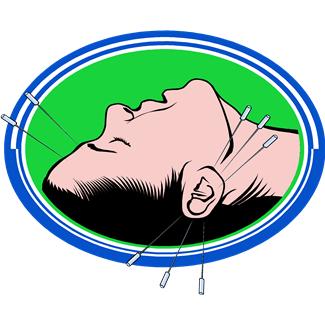 … we look at acupuncture, and we perceive that acupuncture is Chinese Medicine. Acupuncture is only one tool in a tool kit that contains at least 14 different tools. The number one tool is the understanding that blood and energy flow together. … The reason people get sick is that blood and chi become stuck or stagnant.
… we look at acupuncture, and we perceive that acupuncture is Chinese Medicine. Acupuncture is only one tool in a tool kit that contains at least 14 different tools. The number one tool is the understanding that blood and energy flow together. … The reason people get sick is that blood and chi become stuck or stagnant. If you see somebody sitting in a chair and they’re slumped over, you say,
If you see somebody sitting in a chair and they’re slumped over, you say,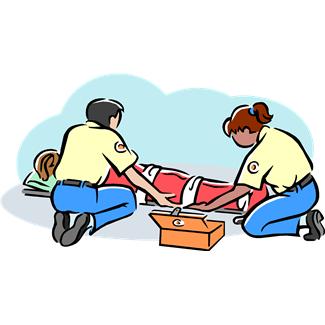

 Insufficiency would be not enough love, not enough laughter, not enough relaxation, not enough exercise, not enough water. That would be insufficiency.
Insufficiency would be not enough love, not enough laughter, not enough relaxation, not enough exercise, not enough water. That would be insufficiency.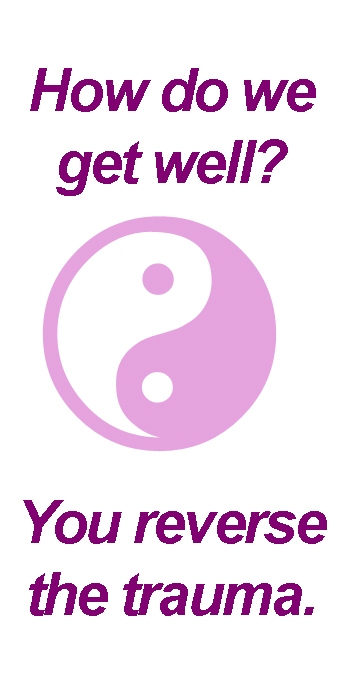
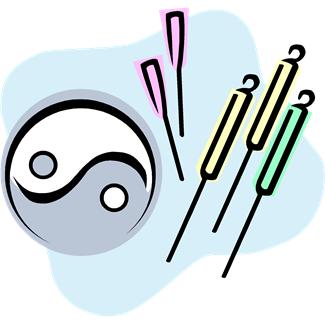
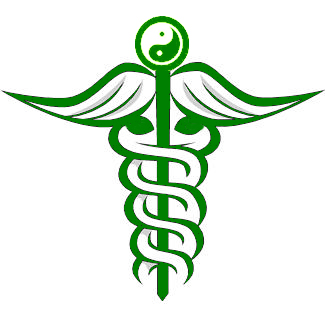 Absolutely right. And many people don’t even know the word acupuncture…
Absolutely right. And many people don’t even know the word acupuncture…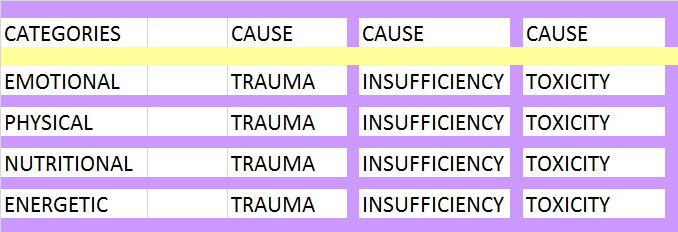
 We now have a transparent way of looking at Traditional Chinese Medicine. It is not a mystery any longer. Our interview guest, Doctor Of Oriental Medicine has demystified it. He has talked about how to diagnose by asking, not only why you are there, but who is giving you pain. He mentioned how many tools there are in the arsenal of Chinese Medicine.
We now have a transparent way of looking at Traditional Chinese Medicine. It is not a mystery any longer. Our interview guest, Doctor Of Oriental Medicine has demystified it. He has talked about how to diagnose by asking, not only why you are there, but who is giving you pain. He mentioned how many tools there are in the arsenal of Chinese Medicine.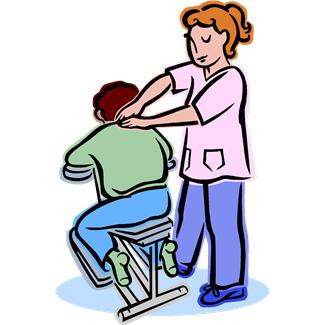
 On September 5, a new study came out in the journal, Science, where germ-free mice were colonized with gut microbes (called “microbiota” in the study itself) from four pair of human twins. Each pair of twin donors contained one obese and one thin human. The recipients of the fecal matter were sterile mice who had no gut microbes until they were exposed to the human microbes.
On September 5, a new study came out in the journal, Science, where germ-free mice were colonized with gut microbes (called “microbiota” in the study itself) from four pair of human twins. Each pair of twin donors contained one obese and one thin human. The recipients of the fecal matter were sterile mice who had no gut microbes until they were exposed to the human microbes.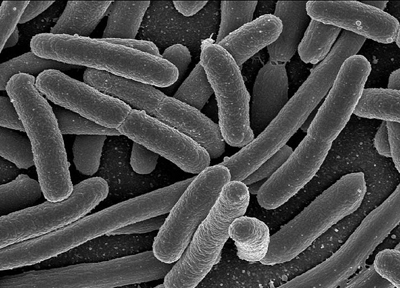

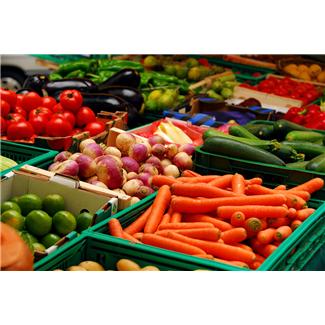

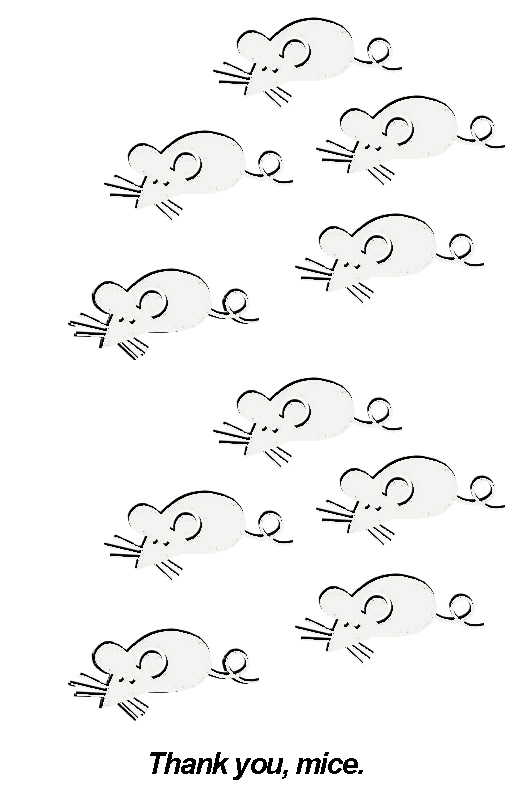
 There are so many ingredients in one product that the habit of reading labels must go along with doing research on what we read, if we wish to understand them. I have been studying labeling of foods since the mid-1970s when I began studying a philosophy that includes meditation (sound yoga) , a lacto-ovo-vegetarian diet and a good clean moral life. I read every label and contacted every manufacturer of anything I ate or drank, and I would pass that info on to my fellow philosophers. My purpose was to eliminate meat, fish, poultry from the diet. I was surprised at how many ingredients and processes were withheld from the consumer. Not enough has changed since then.
There are so many ingredients in one product that the habit of reading labels must go along with doing research on what we read, if we wish to understand them. I have been studying labeling of foods since the mid-1970s when I began studying a philosophy that includes meditation (sound yoga) , a lacto-ovo-vegetarian diet and a good clean moral life. I read every label and contacted every manufacturer of anything I ate or drank, and I would pass that info on to my fellow philosophers. My purpose was to eliminate meat, fish, poultry from the diet. I was surprised at how many ingredients and processes were withheld from the consumer. Not enough has changed since then.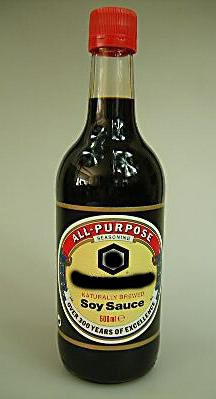 Example One: Take the alcohol in the common soy sauce, for example. It can be made from animal fat, plant substance or it can be man-made. If we choose to stay away from animal products, we won’t know whether there is animal in it by the ingredient name only. If we have an allergy to certain plants, we may not even know we are ingesting the allergic substance due to incomplete labeling practices. And, then there’s synthetic alcohol. That leaves the ingredient “alcohol” open to any number of methods of alcohol preparation.
Example One: Take the alcohol in the common soy sauce, for example. It can be made from animal fat, plant substance or it can be man-made. If we choose to stay away from animal products, we won’t know whether there is animal in it by the ingredient name only. If we have an allergy to certain plants, we may not even know we are ingesting the allergic substance due to incomplete labeling practices. And, then there’s synthetic alcohol. That leaves the ingredient “alcohol” open to any number of methods of alcohol preparation. Aside from the fact that we have been raised to buy food products in packages, the labels of those products don’t tell us the source, and the materials used in the manufacturing process are not required to be disclosed. We accept this and make it a standard in our buying habits.
Aside from the fact that we have been raised to buy food products in packages, the labels of those products don’t tell us the source, and the materials used in the manufacturing process are not required to be disclosed. We accept this and make it a standard in our buying habits.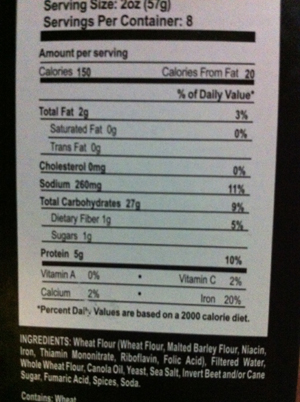 1)
1)  5)
5)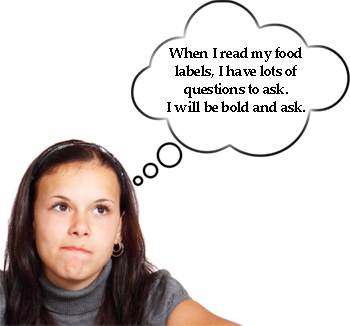 2)
2) 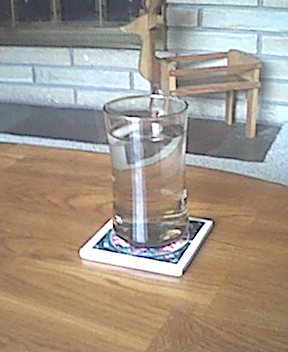 Water works on habit change. It has a profound influence on whatever we are doing. If we are working on changing a habit, we need it. If we are thirsty, the body is already deprived, but it hydrates us. Water flushes out toxins; it balances the chemicals that make us human; it combines with the nutrients from our food. It keeps our health.
Water works on habit change. It has a profound influence on whatever we are doing. If we are working on changing a habit, we need it. If we are thirsty, the body is already deprived, but it hydrates us. Water flushes out toxins; it balances the chemicals that make us human; it combines with the nutrients from our food. It keeps our health.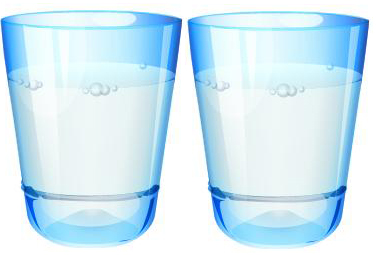 Before sitting down to eat (or even if we eat standing up), pour two glasses of water for ourselves. Before we allow ourselves to take a bite to eat, we drink all the water. We do this at every meal, including snacks.
Before sitting down to eat (or even if we eat standing up), pour two glasses of water for ourselves. Before we allow ourselves to take a bite to eat, we drink all the water. We do this at every meal, including snacks. We can think of the beautiful water supply from which it came, if it is clean water and conjure a picture of wonderful waterfalls surrounding it. Secondly, we can honor those who do not have clean water or any water at all by being grateful for the water in front of us. This mental exercise helps insure the water is drunk with no excuses.
We can think of the beautiful water supply from which it came, if it is clean water and conjure a picture of wonderful waterfalls surrounding it. Secondly, we can honor those who do not have clean water or any water at all by being grateful for the water in front of us. This mental exercise helps insure the water is drunk with no excuses.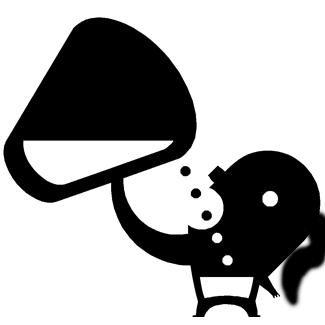
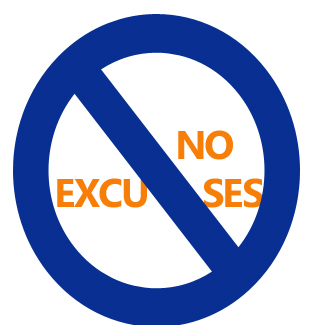 1) It’s not always convenient to stop and get water.
1) It’s not always convenient to stop and get water. 3)
3)





